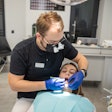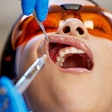Frequently, patients with burning mouth syndrome may have symptoms of being obsessive compulsive and show traits of obsessive-compulsive personality disorder, which can complicate treatment. The study was published in April in Clinical Oral Investigations.
This study shines a light on the importance of a comprehensive, multidimensional approach to treating burning mouth syndrome that includes assessments for obsessive-compulsive symptoms and obsessive-compulsive personality traits, the authors wrote.
"Early recognition of OCD (obsessive compulsive disorder) and OCPD (obsessive-compulsive personality disorder) would allow clinicians to better anticipate potential challenges related to treatment adherence and cognitive vulnerabilities, facilitating the development of targeted interventions," wrote the authors, led by Dr. Federica Canfora of the department of neuroscience, reproductive sciences, and dentistry at the University of Naples in Italy (Clin Oral Investig, April 5, 2025, Vol. 29, 223).
OCD involves having chronic intrusive thoughts and repetitive behaviors, while OCPD is characterized by specific traits, including rigidity and perfectionism.
Psychiatric comorbidities, including depression and stress, have been well documented in patients with burning mouth syndrome and likely contribute to the chronic nature and severity of symptoms. These factors may worsen pain perception through dysregulation of the brain's pain-processing systems, leading to heightened pain sensitivity and poor treatment outcomes, according to the study.
Though obsessive-compulsive symptoms and traits often overlap, their prevalence in patients with burning mouth syndrome has never been explored.
To explore the frequency and characteristics of obsessive-compulsive symptoms and personality with burning mouth syndrome, 123 patients with the chronic neuropathic disorder were assessed using the Obsessive-Compulsive Inventory-Revised questionnaire, the Compulsive Personality Assessment Scale, the visual analog scale, the Short-Form McGill Pain Questionnaire, the Hamilton Anxiety and Depression scales, the Pittsburgh Sleep Quality Index, and the Epworth Sleepiness Scale.
Nearly 42% of the patients showed clinically significant obsessive-compulsive symptoms, while 37% met the criteria for OCPD. Obsessive-compulsive symptoms and OCPD were found in more than 25% of patients, the authors wrote.
However, the study had shortcomings. Its cross-sectional design only offered a snapshot of the frequency and characteristics of obsessive-compulsive symptoms and traits in patients in burning mouth syndrome, but it cannot establish causality, they wrote.
"BMS patients show a high prevalence of OC symptoms and OCPD traits, which should be taken into account by clinicians and considered in the therapeutic approach, given that they could complicate symptom management," Canfora and colleagues wrote.




















